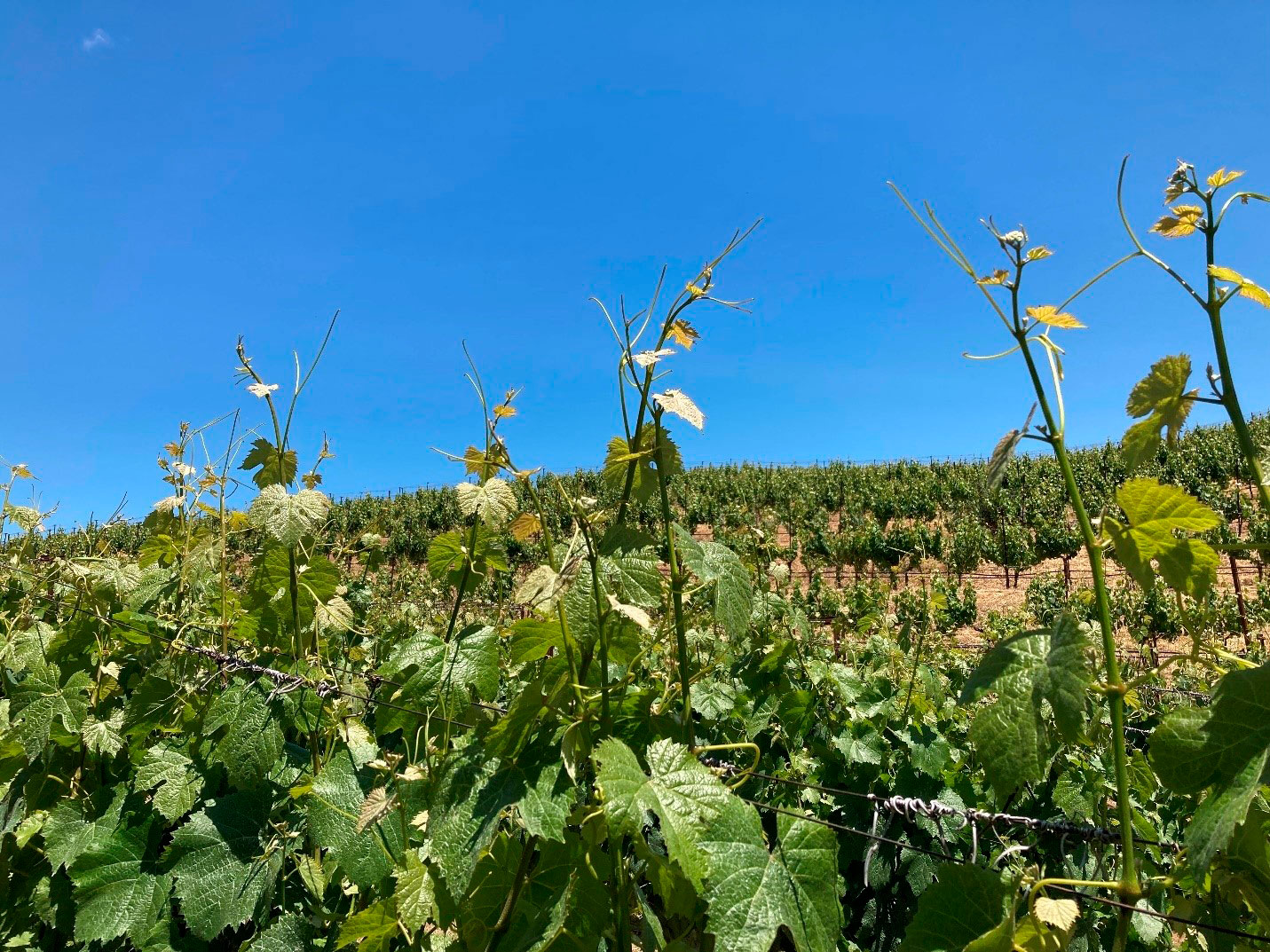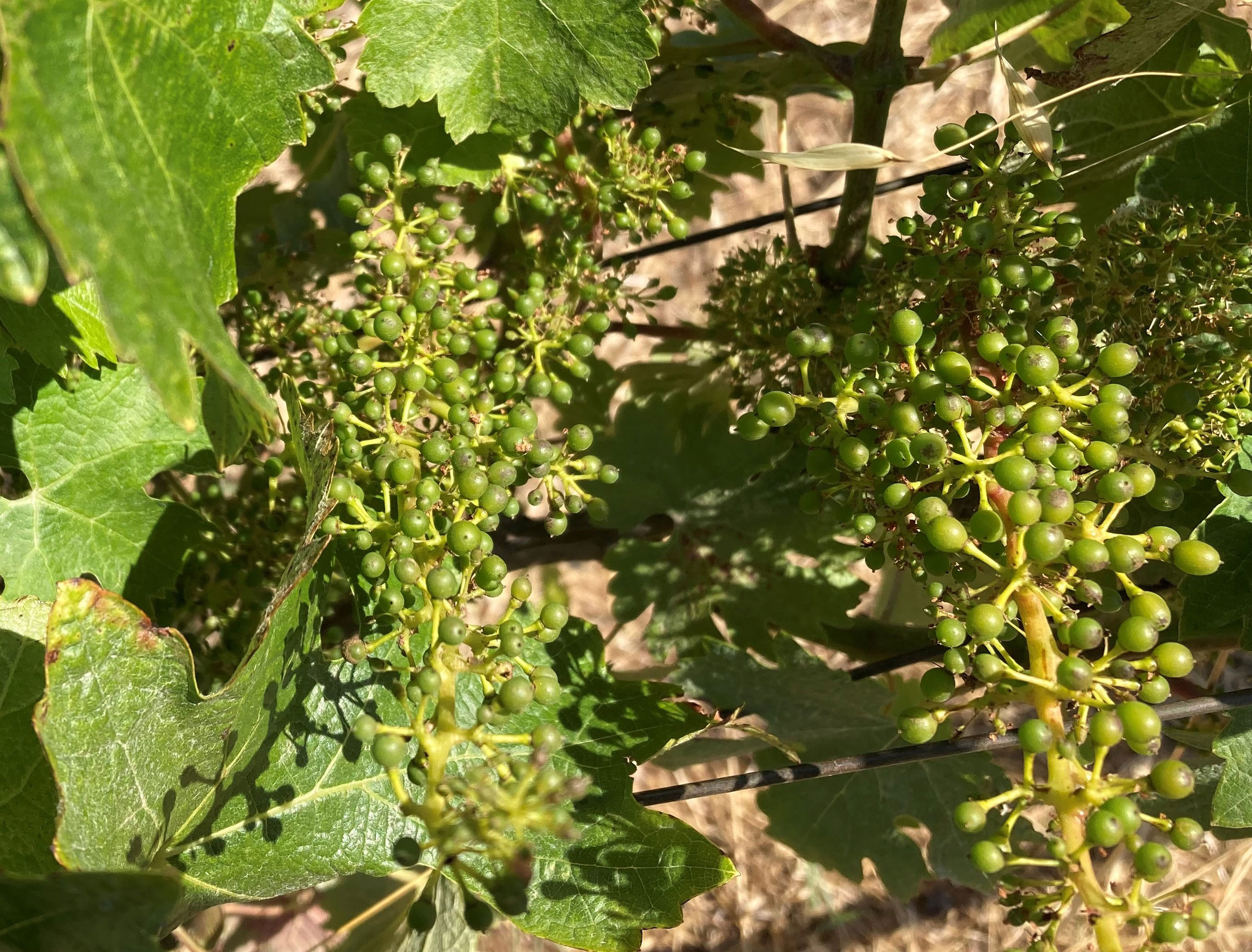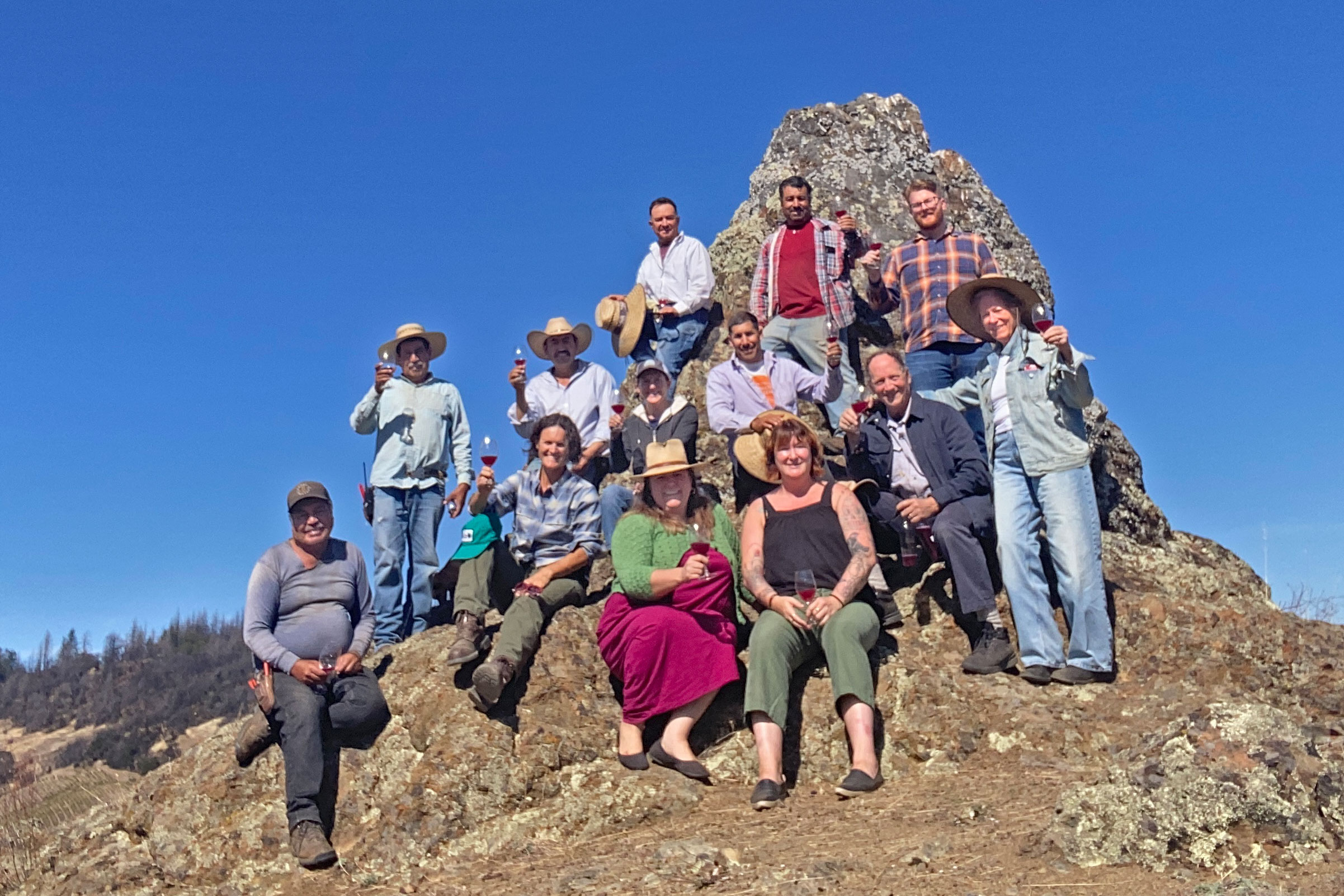
“So much can happen in the life of a vineyard and there’s never enough time and space to tell that story.” —Chris Howell
Occasionally we’d like to share with you, Friends of Cain, a few glimpses into our world of the moment. With farming, it’s not uncommon to talk about the weather. Banal as it may seem, the weather is of intense interest to all farmers. And, most assuredly, winegrowing is, first of all, farming.
After a satisfyingly rainy—even snowy—Winter and early Spring, the rain didn’t stop. It abated, but continued gently into April and even May. This year, vines got off to a late start. Not only that, the temperatures remained cool and the vines were slow to develop.
In the annual cycle of the vine, flowering is the critical moment. Bloom presages the harvest: when we will pick; how much will there be; and what will be the character. Bloom came later than usual—almost the latest that Ashley can recall in her nearly twenty-five years working in and managing the Cain Vineyard. Since it was so cold in May and early June, a late flowering has turned out to be a good thing.
Finally, we can begin to see the nascent, tiny berries that will become the harvest of 2023. There were many, many flowers, and it seems that there will be plenty of grapes, which is another good thing. Because of the protracted bloom, we’ll need to comb through the vines to remove fruit whose ripening is lagging behind the rest of the harvest.

Now, it’s just beginning to warm up, and with that warmth, the vines are finally beginning to wake up and go into their period of Grand Growth, when the shoots can literally extend their reach by inches each day. Our dedicated team of vineyardists will have to race to keep up, working long hours and six days a week as we rush headlong into Summer.
Fortunately, this long, protracted Spring and slow runup to Summer gave our team time to work on the infrastructure of the vineyard, installing trellising and irrigation where we have newly planted vines, removing dead vines lost to the 2020 Glass Fire, preparing more blocks to be replanted in 2024, and even recovering a couple more blocks of resilient vines that refused to succumb to that wildfire.
We will never put the 2020 wildfire behind us; it has become part of our past, and will remain part of our present for decades to come. The effects of the fire will become woven into the landscape and our vineyard for all of the foreseeable future. Though traumatic and a shock to all of us, it has also given us a chance to rethink the Cain Vineyard and prepare it for this century. No doubt, we’ll have a better and more interesting vineyard!
People are always surprised to realize the very long-term nature of a winegrowing project like Cain. After the Cains acquired a piece of the historic McCormick Ranch in 1980, they immediately set to work planting the vineyard—and yet it took ten years to fully plant the Cain Vineyard. Then, it took years for the vines to mature, so that the first significant harvest was 1986, yielding a wine that would not be released until 1990. And the first 100% estate grown Cain Five, the 1990 vintage, was not released until 1994. By then the Cains had left the picture, handing over ownership and control of the project to their partners, the Meadlocks, who continue to this day, with nearly four decades of ownership.
All of that was more than thirty years ago and the story continues, year by year, season by season, vintage by vintage. So much can happen in the life of a vineyard and there’s never enough time and space to tell that story. People in our valley still ask us, nearly three years after the Glass Fire, if we’re rebuilding the winery—and our answer is always the same: we’re replanting the vineyard, and when there are enough vines to harvest, we’ll think about the winery. The life of the Cain Vineyard truly is the vines and the people who tend them.
What particularly underscores the long-term nature of the Cain project is that, even as we are intently replanting the Cain Vineyard, we are also offering wines with more than a decade in the bottle. It’s like sharing photos from a family album, that are part of the long history of Cain. When you open up one of these bottles, taste the wine and share it with friends, you become part of that story.

Yours in wine,

—Christopher Howell, Wine Grower
2023

